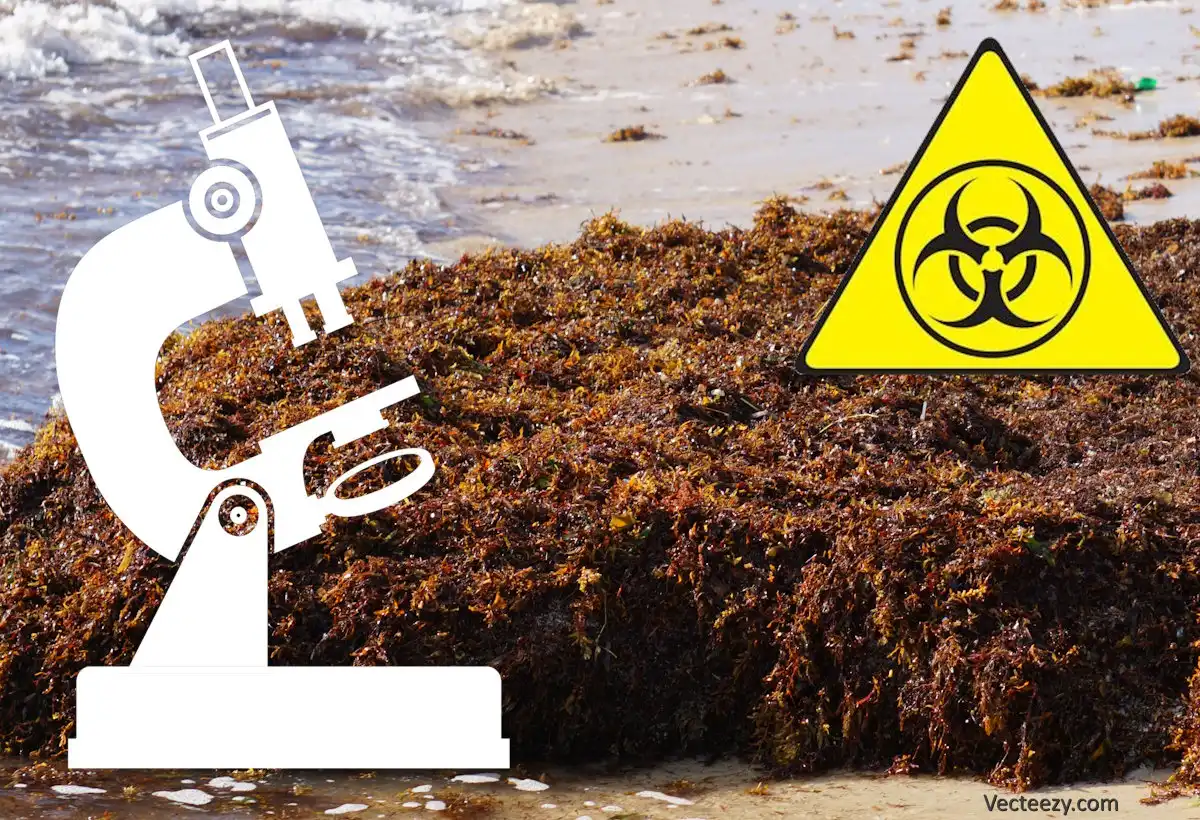The Mystery of Sargassum Algae: How They Thrive
and What Challenges They Pose

Introduction
Sargassum algae are large floating seaweeds that provide a habitat for a variety of marine animals and play a crucial role in the ocean ecosystem. However, over the past few years, a massive belt of Sargassum algae, known as the Great Atlantic Sargassum Belt (GASB), has invaded the tropical waters of the Atlantic and the Caribbean. This proliferation has had detrimental effects on coastlines, coral reefs, and sea turtles, while also posing economic challenges for tourism-dependent regions.
Why Did GASB Appear?
The GASB emerged following unusual winds in 2009-2010 that transported Sargassum algae from their traditional habitat in the Sargasso Sea to the tropical Atlantic. The crucial question is where the nutrients that facilitated this proliferation came from. Several potential sources have been suggested, including upwelling, vertical mixing, runoff from the Amazon and Congo Rivers, and atmospheric deposition.
Nutrients and GASB
A recent study has shown that Sargassum algae in the GASB have a different nutritional composition than those in the Sargasso Sea. They are richer in nitrogen and phosphorus, suggesting that nutrient input is one of the drivers of this proliferation. Arsenic has also been detected in Sargassum algae, and its concentration varies with phosphorus availability. In other words, the more phosphorus there is, the less arsenic is present. This relationship can help identify the source of nutrients, whether they come from the atmosphere, the ocean, or rivers.
Ecological Impact of GASB
Sargassum algae serve as a habitat for over 200 marine species, including endemic ones. They are also essential for fish reproduction, protecting young sea turtles from predators, and providing food for numerous seabird species. However, the proliferation of GASB has led to severe disruptions. Decomposing algae on coastlines can cause health issues, and the presence of arsenic limits their use.
Clues to Nutrient Origins
To understand the source of nutrients for GASB, researchers have examined the composition of Sargassum algae and conducted modeling. They found that nutrients came from various sources, including rivers, the ocean, and the atmosphere. The chemical composition of Sargassum algae can serve as a “fingerprint” to identify these sources.
Challenges in Managing GASB
Managing GASB poses numerous challenges, including the need to predict its seasonal and interannual variation. A better understanding of the underlying causes would enable the implementation of management strategies to mitigate the impacts of GASB.
Conclusion
In summary, the proliferation of Sargassum algae in the Great Atlantic Sargassum Belt (GASB) is a complex phenomenon influenced by nutrients, winds, and ocean currents. This proliferation has significant ecological and economic consequences for coastal regions. Understanding the mechanisms behind GASB is essential for better management in the future. Research continues to unravel this oceanic mystery and find solutions to preserve our marine ecosystems.
McGillicuddy, D.J., Morton, P.L., Brewton, R.A. et al. Nutrient and arsenic biogeochemistry of Sargassum in the western Atlantic. Nat Commun 14, 6205 (2023). https://doi.org/10.1038/s41467-023-41904-4
